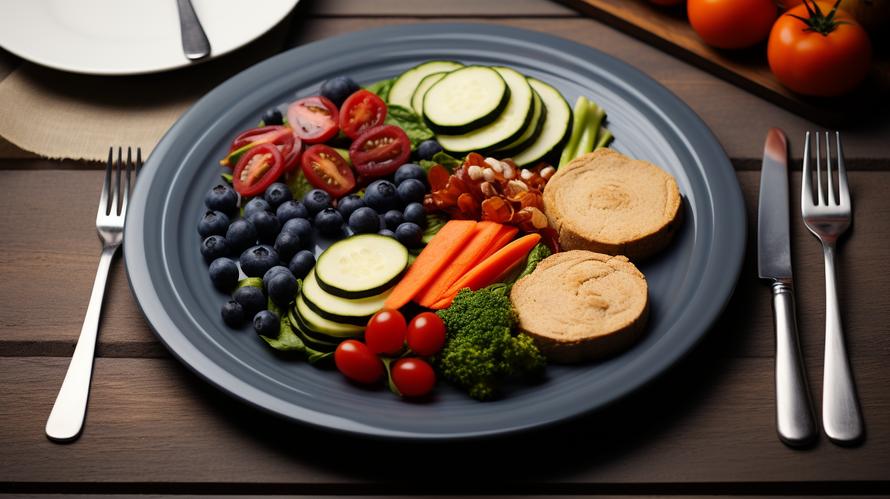Picture this: an entire nation’s dietary destiny decided not by a thick, inscrutable manual or a rigorous list of do’s and don’ts, but by an object so simple, so everyday, that it instantly demystifies the complex science of nutrition. Yes, that’s right—the humble dinner plate has become the newest tool in the government’s arsenal to wage war against poor eating habits and the ever-rising tide of obesity and chronic diseases.
It was in the early 2010s when the United States Department of Agriculture (USDA) made a significant shift. Out went the age-old food pyramid—a diagram that had become as synonymous with nutrition guidelines as peanut butter is with jelly—and in came MyPlate. This colorful plate, which is ingeniously divided into proportional segments, represents the five food groups: fruits, vegetables, grains, protein, and dairy.
It’s not just the clarity of this image that’s striking—it’s the subliminal messaging. Without saying a word, MyPlate silently speaks volumes: Half your plate should be fruits and vegetables. Goodbye, hefty steaks taking center stage. Farewell, mountains of mashed potatoes. Instead, this easy-to-understand graphic encourages a balanced diet at a single glance.
But the USDA’s MyPlate is certainly not the first or only instance of a government turning to visual aids to support public understanding of nutrition. Across the pond, the United Kingdom’s National Health Service (NHS) uses Eatwell Guide, a plate that similarly demonstrates how to balance the different food groups. Further afield, Canada’s Food Guide adopted a new look in 2019—also in the form of a plate—with a notable absence of dairy as a distinct category, indicating a pivot towards plant-based sources of protein.
Digging deeper into these plates, we move beyond their simplicity to unveil a spectrum of considerations they reflect. They’re not just about what’s on your plate but also touch upon sustainability (encouraging more plant-based eating), food insecurity (implying that a healthy diet is within everyone’s reach), and cultural diversity (acknowledging the wide variety of foods consumed around the globe).
But here’s the million-dollar question: do these elegant, brightly colored plates translate into a healthier populace? Studies show mixed results. On the one hand, they are undoubtedly successful in raising awareness. They’ve become icons for nutrition education, popping up in schools, doctors’ offices, and community health programs. On the other hand, knowledge doesn’t always translate to action. Many of us know we should include more greens or opt for whole grains, but the siren call of processed, convenient foods can be hard to resist.
So how can you use this knowledge to your advantage and actually shift your eating habits toward the healthier patterns these plates represent? Here’s some actionable advice, tied to these government-designed plates:
1. Make the Plate Your Template: Think of your plate as a blueprint for every meal. Before you start piling on food, visually divide your plate and allocate space for each food group.
2. Variety Is the Spice of Life: Within each section of the plate, vary your choices to prevent boredom and provide your body with a range of nutrients. Swap out chicken for lentils in the protein quarter, try quinoa instead of rice in the grains section, and so on.
3. Color It Up: The more colorful your plate, generally, the better. This usually means you’re getting a good mix of fruits and vegetables, and hence, vitamins, minerals, and antioxidants.
4. Portion Control: These plates don’t just suggest types of food but also hint at portion sizes. Use them to guide how much you eat, not just what you eat.
5. Savor Each Bite: Eating is not just about nutrition—it’s also about enjoyment and savoring flavors. Take your time with every bite to ensure you’re listening to your body’s fullness cues, which can be easy to miss if you’re eating too quickly.
6. Prep and Plan: One reason we stray from these dietary ideals is a lack of time. Consider meal prepping, where you prepare and portion out balanced meals in advance. It’s easier to eat healthily when healthy food is at hand.
7. Be Fluid with Fluids: Even though the plate doesn’t depict it, remember to drink water. Staying hydrated is crucial, and water is always the best beverage choice.
8. Engage with the Guidelines: Look beyond the plate diagrams and read into what they suggest. You’ll find guidelines on reducing sugar, salt, and saturated fats. Integrating this advice can elevate your health.
9. Feedback Loop: Finally, consider how you feel physically after your meals. If your dietary changes are working, you should feel energized and satisfied. Your body will tell you if you’re on the right track.
The government plates show you that a balanced diet doesn’t need to be complicated or revolve around a fad that’s as fleeting as a hashtag. It’s about fundamental, sensible eating that’s as straightforward as arranging your dinnerware. Sure, guidelines and visuals won’t instantly revolutionize dietary habits worldwide, but they offer a starting point, a nudge in the right direction.
The key takeaway? Use these guides as just that—guides. Make them work for your life, your tastes, and your nutritional needs. After all, they’re not just plates; they’re invitations to explore the art and science of eating well, one delicious, balanced bite at a time.



